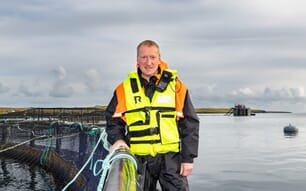“The shellfish processing sector has a major waste disposal problem. UK production of waste from calcareous shellfish is around 75,000 tonnes per year, of which potentially 20,000 tonnes is flesh. Disposing of this waste is costly with fees varying from £30 to £60 per tonne.
“We need an estimated 6,000 to 7,000 tonnes of bait each year for the 30,000 to 35,000 tonnes of crab, lobster and whelk landed in the UK. With bait costs ranging from £400 to £600 tonne per tonne the cost to industry in bait alone is £3 to £3.5 million per annum,” said Michaela Archer, Seafish Project Manager.
* "With bait costs ranging from £400 to £600 tonne per tonne the cost to industry in bait alone is £3 to £3.5 million per annum" |
|
Michaela Archer, Seafish Project Manager
|
“There are opportunities for those prepared to invest. An investment of £35,000 in a flesh waste facility with a capacity to process five tonnes a week would produce just over half a million 0.5kg bait sticks a year. If these were sold at 15 pence a stick a basic cost analysis indicates this would bring in a profit of around £12,000 (15% margin). This would be in addition to savings of around £15,000 a year on waste disposal.”
To assess whether the flesh from scallop, whelk and crab waste was suitable as bait initial lobster tank trials started in June in Padstow at the National Lobster Hatchery (NLH), with most of the shellfish processing waste coming from the South West. The bait was made by using the flesh from king and queen scallops, brown crab and whelks, and combining this fleshy material with a binder to produce a sausage-like ‘bait stick’.
Tank tests were carried out on lobsters, brown crab and whelks. The mixed whelk and crab bait was effective at attracting lobster and worked better than the ‘standard’ bait, and it was also almost as effective as the ‘standard’ bait for attracting whelk. The less attractive scallop waste could be improved by blending with other shellfish to produce a better bait. Crab however was not attracted to any of the shellfish derived baits.
“We are applying for additional funding to carry out the next stage of the work. This includes assessing the performance of trial baits at sea and to look in more detail at the bait market, as well as undertaking commercial scale, pilot bait production,” said Michaela. “However we are going to use a simpler method of bait production as the use of binders is a challenge.”
Seafish funded the work through the Industry Project Fund. A number of industry partners were involved including the Shellfish Association of Great Britain (SAGB), the Resource Efficiency Knowledge Transfer Network and the Cornwall Sea Fishery Committee, as well as input from seafood processors including Coombe Fisheries, West Coast Sea Products and the Blue Seafood Company.



